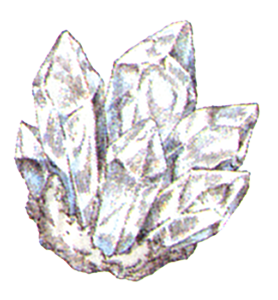
On this page I'll be posting entries translated from the guidebooks and Tales encyclopedias. I will compile items from several different books, with each entry's origin indicated by an abbreviation at the end. I'm choosing entries to include at random depending on what seems interesting or useful at the time, and adding them to this page in English alphabetical order. Eventually I hope to include every Eternia-related encyclopedia entry from all of the official guidebooks.
Entries for characters and other sources of character profiles will go on their own page (coming soon).
The localization conventions used here will be a mixture of the one used by the official Namco script, and one that I'm currently devising for use in my script retranslation project. My aim is to bring the spellings of nouns closer to how they are pronounced in the Japanese script, while taking their euphony in English and etymology into account. This is a work in progress, so the spellings of nouns might shift over time. For words in Inferian or Melnics whose pronunciations aren't immediately obvious, I'll provide parenthetical phonetic guides in US English that are based on the original pronunciations.
The sources for this page are listed as follows:
Namco/Famitsu Editorial Dept. "Tales of Eternia: Biographica & Words Dictionary." Tales of Eternia Official Guide Book. Enterbrain, 2001, pp. 18-29. ISBN 9784757703254. (henceforth referred to as Famitsu) 52% complete
Namco Official Guide Book Tales of Eternia. Namco, 2000. ISBN 4907892080164. (or Namco) 0% complete
Fighting Studio. Tales of Dictionary: Tales of Phantasia, Destiny, Eternia, Fandom Vol. 1, Narikiri Dungeon. Futabasha, 2003. ISBN 9784575163582. (or Futabasha) 0% complete
VJump Editorial Dept. Tales of Eternia Complete Guide. Shueisha, 2001. ISBN 9784087791297. (or VJump) 0% complete
All of the text in the entries below is translated directly from these sources. If I add my own comments, they'll be in colored text like this.
Aerial Board (or Aerialboard) [magic/technology]: An arte that enables practitioners to travel at high speeds while levitating their bodies up to 30cm from the ground, using the power of the wind craymels. This is extremely useful in the early stages of the game, but when Sylph grants this technique to the main cast, he leaves them with these words, "As long as you're in a world with wind craymels, that is..." hinting ominously at their destination to come. (Famitsu, p19)
Auger (pronounced "OH-zheh") (or Orz) [mineral]: A translucent crystalline substance that acts as a catalyst to extract the power contained in craymels. This material is used in the manufacturing of objects such as auger earrings and the outer vessels of craymel cages. However, in present-day Inferia, knowledge of the technology for processing auger has been lost. (Famitsu, p20)

Auger spheres (or Orz crystals) [item]: A form of auger crystal, processed into spherical balls, that was used for capturing craymels during the Melnics Era. These were the precursors of craymel cages. (Famitsu, p20)
Auger earring (or Orz earring) [item]: Earrings crafted from auger. Originally used as a catalyst to enable heart-to-heart communication with craymels, they can also serve as a translation device for the Melnics language as both craymels and Celestians use this language. However, the earrings only function if the hearts of both parties attempting communication are on a compatible wavelength. At present, the method of fabricating them has been lost, making them a rare artifact only obtainable by high-ranking scholars or craymel mages. (Famitsu, p20)
Aurochs (or Orlocks) [creature]: A creature similar to cattle. In Rachouans they are raised as livestock, and Reid loves their milk. Their livers can be boiled down and used to make a stomach medicine, but for some reason sucking on this medicine causes Meredy to become inebriated. (Famitsu, p20)
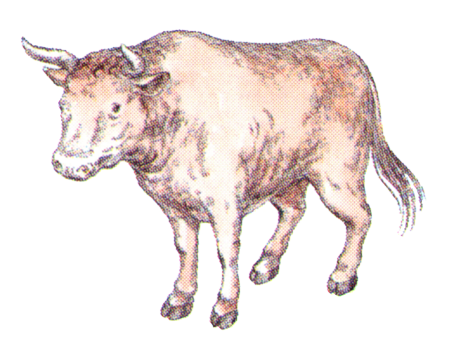
Aurora War [history]: 2300 years ago, Nereid's machinations caused interplanetary war to break out between Inferia and Celestia. As this happened to take place during an era of advanced technology, the destruction wrought by both sides launching ceaseless barrages of attacks with powerful weapons and magical artes ultimately led to the downfall of the Melnics civilization. The war incurred Seyfert's wrath, provoking Him to seal off both worlds with the Seyfert Ring. (Famitsu, p21)
Baiba [culture]: An interjection in the Melnics language, taken from the English word "wow." (Famitsu, p26)
Base Craymels (or Primary Craymels, or basic Craymels) [craymels]: The collective noun for the Greater Craymels that govern water, wind, fire, earth, ice, and lightning. They are subordinate to the Unifying Craymels, but between Base Craymels themselves there are no hierarchical relationships. (Famitsu, p22)
Baten Kaitos (or Vatenkeist) [story background]: The nonmaterial world created by Nereid 10,000 years ago. It is a world devoid of substance that exists in a perpetual state of flux, where all visible forms are part of a landscape of pure mental imagery. Until Seyfert manifested Himself and created the material plane 8000 years ago, Baten Kaitos was the only world that existed. (Famitsu, p26)
Bitterwater (or Bitter Water) [culture]: A foul-tasting health tonic made from a solution of powdered nightflyer carcasses, consumed only in Celestia. (Famitsu, p26)
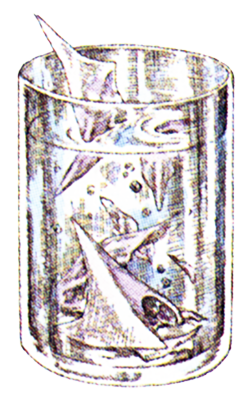
Bridge of Light [structure]: A mechanism that enables transport to Celestia, discovered thirty years ago by Balir when he was a researcher for the Royal Observatory of Astronomy. Located on the summit of Mt. Farose, the Bridge can only be activated with the power of Rem. In fact, when Rem determines that certain humans should be sent to Celestia, they are allowed to operate the Bridge without having to first go through a series of procedures; thus Ras was also able to use this bridge to cross over. Incidentally, Roen and Zosimos used the Bridge of Expedition, not the Bridge of Light, for their travels. (Famitsu, p27)
Calangue (ka-LONG-geh) (or Kalange) [unit of measurement]: A unit of distance. One calangue is approximately 333.333[...] meters. This means that the distance from the surface to the Olbers Boundary is thirty calangues. (Famitsu, p20)
Calendar Era [unit of measurement]: The prehistoric era is referred to as B.S. (pronounced "bis") = Before Seyfert, followed by the Seyfert Era = S.E. (pronounced "soon"), and then the Inferian era, also known as Inferia Rule = I.R. (pronounced "ul"). For reference, Nereid created Baten Kaitos 10,000 years before the present, around B.S.6000. 8000 years before present, around B.S.4000, Seyfert manifested Himself and created the material world. 3800 years ago, the Melnics planetary union was formed, marking the epochal year for the S.E. calendar era, and the start of what would become known as the Melnics Era. The Aurora War broke out 2300 years ago in S.E.1500. 2200 years ago in S.E.1600, Seyfert closed off Inferia and Celestia. The I.R. era began when the Kingdom of Inferia was founded 198 years ago. And now, in this tale, the year is I.R.198. (Famitsu, p26)
Caloric flow (or Kaloric flow) [academics]: A phenomenon involving the flow of light craymels through space. While the phenomenon itself has been demonstrated scientifically, there are many theories regarding the cause of the flow, and opinions among researchers are divided. Incidentally, Keele is a supporter of the facula hypothesis. As it is a fundamental concept in craymel science, it frequently appears as an exam topic at the University of Mintz. (Famitsu, p20. Although the meaning is different, the name for this phenomenon is pronounced the same as the "caloric" in caloric theory, which is an obsolete scientific theory regarding the flow of heat, and might be inspired by it.)
Cascading Global Cataclysm Theory (or World Chain Destruction Theory) [academics]: A theory formulated by Keele, which states that craymels under the influence of the Dark Orb will undergo a cascading collapse, ultimately triggering a catastrophe on a global scale. While not accurate in every respect, Keele's theory was not far off from the truth, and yet ended up being the cause of his suspension from the university. (Famitsu, p29)
Celestii (or Celestian) [culture]: Another name for Celestians. This term is only used by Celestians for referring to themselves. (Famitsu, p24. Although the original script uses two sets of distinct terms for how Celestians and Inferians refer to themselves and each other, the Namco English script collapses both terms into a single set of "Celestian/Inferian.")
Cepheid ore (SEF-fyde) [mineral]: The world's hardest mineral. Due to its hardness, there are no existing methods or tools to process it. Kukrol, an alchemist and craymel engineer from Imen, strived to create a metal that could exceed the strength of cepheid ore. (Famitsu, p24. Another astronomy reference. A Cepheid variable is a type of variable star, its name taken from Delta Cephei in the constellation Cepheus.)
Chamballoon [sport]: A game devised by the Balloonmaster of Chambard. The rules direct the players to pop balloons arranged in a certain pattern in as little time as possible. The winner receives the title of "King and Balloon," a reference to the early Namco arcade game of the same name. (Famitsu, p22)
Chambard [toponym]: Its official name is "Chambard, the Town of Hot Sand." As it is located near the Valley of the Fire Craymels, Chambard is exceptionally hot even by the standards of Inferia's warm climate. The temperatures are so extreme that the town appears to the eye as if it were swaying in a haze of heated air, causing Meredy, who as a Celestian is sensitive to the heat, to faint. (Famitsu, p22)
Coleraine's jar [treasure]: One of the Seven Hidden Treasures of Celestia, this is a jar that contains the flatulence of a hero, Coleraine, who once lived in Celestia. If you use it in the menu screen, it produces one of several random effects, including healing, recovery, damage, poison, or paralysis. What exactly Coleraine achieved for him to be granted the title of a hero remains unknown. (Famitsu, p22)
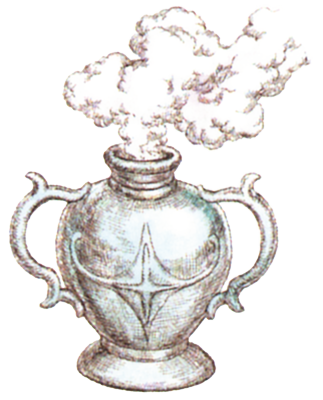
Colin [story background]: Meredy's cherished mascot doll that she keeps attached to her parasol. Its true origins are unknown. (Famitsu, p22. This mystery is solved in Tales of Fandom Vol. 1.)
Craymelball [sports]: A mini-game that can be played at the athletic fields of the University of Mintz. Craymel artes are used to create an inversion between the ball and the craymel field. Incidentally, the girls who are the player's opponents have experience competing at interscholastic athletic meets. When they haughtily challenge the party while boasting of this fact, their words may end up kindling your fighting spirit. (Famitsu, p21)
Craymel cages [item]: An apparatus containing a mineral known as craymelite that is encased in auger. Originally created during the Melnics Era, in Inferia the technology to manufacture them is no longer known. Cages come in Inferia-type and Celestia-type configurations, both largely similar in functionality but differing in their design. Inferians are capable of performing an array of craymel artes depending on the types of craymels housed within the craymelite inside the cage. As for Celestians, while they do retain the ability to manufacture cages, they are unable to use them to perform craymel artes. Instead, by combining cages with weapons such as firearms, they can achieve effects similar to those of craymel artes. The standard craymel cage is around 10cm long, but on Celestia where they are used for industrial purposes, larger units in the 10m range have also been fabricated. (Famitsu, p21)
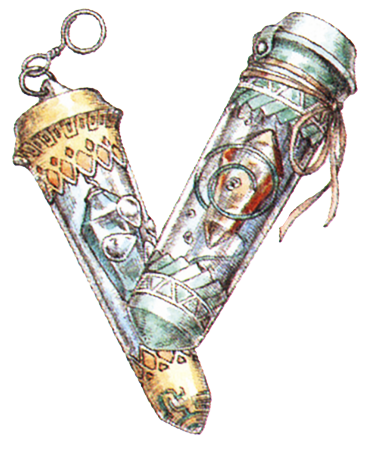
Craymelcraft (or Craymel Craft) [equipment]: The apparatus Balir constructed in preparation for his eventual return to his homeland of Inferia. It is capable of travel to the neighboring world by flying through the air and breaching the Olbers Boundary. In the game, Galenos discovers the craymelcraft that Balir left behind and makes his own improvements to it, whereupon Meredy boards it to cross over to Inferia. (Famitsu, p21)
Craymel dust [phenomenon]: A craymel light vortex. This is a phenomenon in which glimmering craymels ascend in the air, causing them to appear like countless lights rising into the sky. (Famitsu, p21. See also Snow of Happiness, a somewhat similar phenomenon on Celestia.)
Craymelite (or Craymel Crystal, or Craymel Stone) [mineral]: A crystalline substance that can be used to house craymels. Craymelite serves as the core of a craymel cage. (Famitsu, p23)
Craymelmancy [culture]: Also known as a "craymel-check." This refers to a form of divination based on personality typing that is performed at the Church of Seyfert at the foot of Mt. Farose. A fortuneteller asks the player a series of questions, and then tells them what sort of personality they have, which type of craymel they match, and which of the characters with whom they share the most in common. (Famitsu, p22)
Craymels [story background]: (lit. "crystal spirits") Neither animate nor inanimate, craymels dwell within all things, and govern all phenomena. They are controlled by their respective Greater Craymel and are not sentient in themselves. Capable of freely moving between the spirit world of Baten Kaitos and the material world, they belong to neither realm, as they consist of neither matter nor spirit. What can be determined is that craymels of water, wind, fire, and light exist in Inferia, and craymels of earth, ice, lightning, and darkness exist in Celestia. You might then wonder how the wind can still blow in Celestia despite the lack of wind craymels, and how there can still be soil in Inferia despite not having earth craymels—but one may regard the wind in Celestia as mere wind, rather than living wind. It is possible that there are also craymels for sound and spirit, but their existence has not yet been discovered. According to one theory, craymels have existed since time immemorial, long before Seyfert or Nereid appeared on the scene. (Famitsu, p22)
Dark Aurora [magic/technology]: The form of Aurora magic that Nereid created for the purpose of destruction. Users can obtain the power to annihilate matter by absorbing craymels into their spirits and performing a fringe. For those who are born with the ability to use Dark Aurora artes, they can easily learn the skill if they have the need, but using it puts themselves at risk of becoming possessed by Nereid. (Famitsu, p28)
Dark Orb (or Dark Matter) [structure]: Also known as the "Nereidoid," the Dark Orb is a black sphere floating in the center of the Seyfert Ring. One day the Orb abruptly emerged and began to grow at a rate of 300 langues (approximately 90 meters) per year, reaching a current diameter of 300 meters. Given the fact that it encapsulates Shizel Castle, the Dark Orb is thought to consist of an energy field or shell. It possesses the ability to generate Olbers bursts, which can be controlled by Shizel, but may also activate when under external attack. In the eyes of believers in Seyfert, who are unaware of the truth behind the Dark Orb, it is a sign of the Second Coming of God. (Famitsu, p22)
Dede [creature]: A miacis kitten that Fogg had gifted to his wife Lysithea. Her favorite food is hamburgers without pickles. Fogg dotes on Dede, treating her as a stand-in for his missing wife. (Famitsu, p25)
Docqtarc Effect (or Doctark Effect) [academics]: The phenomenon in which light craymels interact and emit waves of the same frequency; in other words, the reciprocal resonant action between light craymels. The device that Keele invented to take measurements of the craymel field utilizes this phenomenon. (Famitsu, p25)
Doenys (or Donies) [plant]: (pronounced "do-wen-neece") A plant in the aster family that is used as one of the dye ingredients for Rachouan-dye. It produces small flowers that emanate a sweet scent. Vast doenys fields lie to the west of Barole, and in springtime, the winds kick up the flower petals into a fragrant whirlwind that envelops the city. In the language of flowers, the doenys carries the meaning of "unfulfilled longing." This also happens to be the type of flower that Ras wears on his hat. (Famitsu, p25)
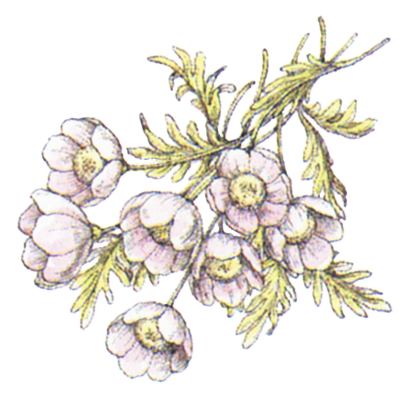
Eggbear [creature]: Their eggs fetch a high price due to their use as a miracle elixir. They are considered an unusual type of mammal as they are hatched from eggs, similar to a platypus.
(Famitsu, p19)
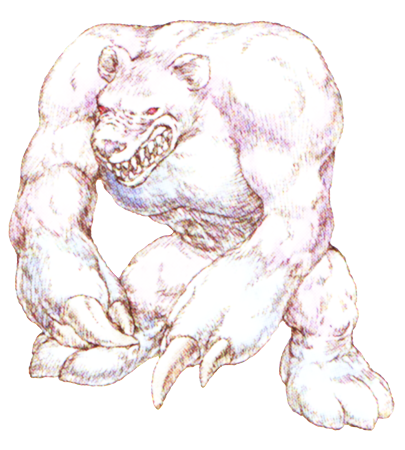
Elara [story background]: Also called the "gleamsight." The elara is a light-emitting organ that is present on the heads of Celestians from the time of birth. It normally emerges from the forehead, but the size and location can vary, sometimes even appearing on the back of the head. For reference, Chat's elara is around the standard size. The elara not only provides a convenient light source in dimly-lit areas, its light is also capable of telepathic transmission of thoughts. Usually, elaras emit a faint, milky-white light, which turns to a bluish glow when in telepathic mode. When someone is experiencing intense feelings of anger, their elara is said to be stained crimson. The elara grows along with the rest of the body, and while there are differences from person to person, larger sizes tend to correspond with stronger aptitude for magical and telepathic abilities. According to Kuklor's theory, the elara originates in the reaction of craymels dwelling in the body to changes in organic ions. On the other hand, Keele hypothesizes that it might consist of a crystalline substance with attributes similar to auger. (Famitsu, p19. In our world, "Elara" is a moon of Jupiter, named after a figure in Greek mythology.)
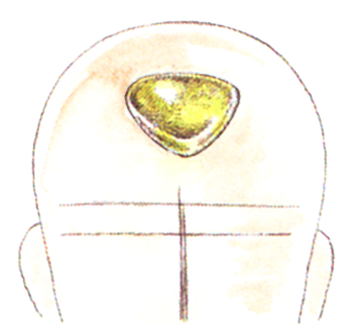
...... (ellipsis) [system]: A type of emotional balloon. If this mark appears in the middle of a conversation, pay close attention. These often indicate key points for understanding the story, such as when valuable information is being concealed or something is being foreshadowed. They may be difficult to notice during your first playthrough, but you will probably understand their importance the second time around. (Famitsu, p22)
Emotional Balloon [system]: The name for the system that expresses character emotions using symbols such as !, ......, ?, sweatdrop, blush, squiggles, etc. Apparently abbreviated as EB. (Famitsu, p19)
Eternia [world]: The collective name for the world that encompasses Inferia, Celestia, and the Olbers Boundary. (Famitsu, p19)
Facula hypothesis [academics]: This hypothesis proposes that craymels, which up until now have been regarded as a type of elementary particle, possess a weak sense of intelligence or volition on the individual or collective level. This has not yet been proven at the present time, but if correct, then this hypothesis could establish an underlying framework for caloric flow and globular distortion. However, that would likely also necessitate a re-examination of the Docqtarc Effect from a different perspective. (Famitsu, p27. Perhaps derived at least in name from "facula," pronounced in Japanese exactly the same as the above word, meaning a bright magnetic spot that appears on the surface of a star or planet.)
Food preferences [story background]: Reid and his adventuring companions were all designated their own favorite foods, and when eating their favorite dishes during camping meals, they experience greater healing effects compared to the rest of the party. It is also easier for them to raise their recipe skill level when they are the ones cooking their favorites. The characters have diverse tastes, ranging from Farah who prefers her food on the healthy side, to Chat who likes anything sweet, plus Meredy who loves seafood. Incidentally, Ras' list of favorites was intended to feature Bitter Tofu and Sour Sushi. One can assume that he might have developed a taste for them while eating Galenos' cooking after crossing over from Inferia to Celestia. For someone like Ras, with his eccentric palate, getting the chance to try out Celestian cuisine must have surely been a special treat. (Famitsu, p21)
Gald [unit of measurement]: A unit of currency. 1 gald is equivalent to approximately 10 yen. (Famitsu, p20)
Glimmer Spire [structure]: East of Barole in Inferia, there is a towering spire that rises out of an archipelago. As it is surrounded by tall mountains, it can only be reached via airship. The player can find Valkyrie on the top floor. (Famitsu, p21)
Globule distortion [academics]: Refers to the following phenomenon: when caloric flow is observed over a long span of time, distinct points emerge where craymels are more likely to flow through or linger. This causes the craymel density to increase in these spaces, which then results in strong localized imbalances in craymelic pressure. (Famitsu, p21. This may be a reference to the astronomy term "globule," which is the word for a dense cloud of dust in outer space.)
GPS [item]: An acronym for Global Positioning System. This item tells the current location of the user in coordinate values, and is one of the Seven Pirate Tools. Since it does not involve high technology such as satellites, Chat must be determining her position by some ancient method. (Famitsu, p22)

Grand Fall [phenomenon]: Also known as the Great Collapse, this term describes the phenomenon in which Inferia and Celestia drift closer to each other until they finally collide. Not only does the distance between them gradually shrink, it abruptly narrows even further each time an Olbers Burst occurs. At first it was assumed that the phenomenon was being induced artificially by Shizel, but in fact it was all a scheme carried out by Nereid, who wished to absorb the craymels of both worlds into himself and thereby perfect the Dark Aurora. The Grand Fall thus has a negative impact on not only the human world, but also on the craymel world. Among the students of the University of Mintz, the Grand Fall is referred to as the Hamburger Phenomenon. (Famitsu, p21)
Grip Sword [item]: The sword lost by the old man who stands in front of the arena in Inferia City. He asks the party to help him find it for his student, but his student happens to be Cress Albane. Therefore, this old man must be none other than the very same Master Tristan from Phantasia. (Famitsu, p21)
Gummies (or Gels) [item]: An indispensible healing item in the Tales series. In this game, the tuna gummy makes its debut, showing the eagerness of the development team for creating new products. Unlike in Phantasia, their manufacturing process is shrouded in mystery. (Famitsu, p21)
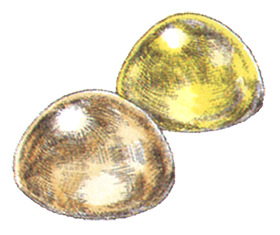
Higher-Order Craymels (or Supreme Craymels) [craymels]: Among the Greater Craymels, these craymels occupy the highest rank, capable of functioning as independent actors even during times of emergency. They possess such immense powers that they normally exist at a remove from the human world. Secundus and Maxwell are included in this category. (Famitsu, p21)
Holy Bottle [item]: A type of bottle filled with holy spirit. Its components and method of manufacture are unknown. Using one has the effect of lowering one's probability of running into monsters for a limited period of time. Although Keele needed to use these when traveling between Mintz and the mountain observatory, all of the bottles inside the observatory were empty. Perhaps the real reason Keele stayed there for so long was because he had run out of bottles and was simply unable to return. (Famitsu, p27)
Inferia [story background]: One of the worlds that forms Eternia. Inferia is blessed with abundant bright sunshine because of its light craymels, and the influence of the wind craymels gives rise to year-round gusty winds as warm as a spring breeze. As a result, Inferia has a comfortable climate that is temperate enough for plants to grow quickly. The inhabitants belong to a single country, the Kingdom of Inferia, and live under the reign of its King. Their level of civilization and technology are lower than those of Celestia, but this is a consequence of their belief system that regards craymels as sacred, and thus they have not made the leap to using them in research for developing new tools or energy. On the other hand, Inferians do possess a sophisticated culture of arts and academics, due to the importance they place on history. (Famitsu, p18-19)
Langue (LONG-geh) (or lange) [unit of measurement]: One langue is approximately thirty centimeters. This unit of measurement is taken from the English word "leg," and is meant to be the average length of an adult man's foot. (Famitsu, p28. In Japanese, the same word is used to mean both "leg" and "foot" (ashi).
Lenses [item]: The objects being collected by a mysterious young woman named Ilene, who can be found in Chambard and Tinsia. When the player collects a certain number of lenses, Ilene gives them an item. A total of sixty lenses are scattered around various places worldwide. They originally come from Destiny where they were important items. (Famitsu, p29)
Light Craymel Research Laboratory (or Light Craymel Laboratory) [structure]: As one of the laboratories established at the University of Mintz for craymel research, this laboratory focuses on light craymel science, including the related discipline of astronomy. The light craymel science department only admits students with exceptional academic capabilities, even by the standards of the elite students of Mintz, and those who distinguish themselves with their accomplishments in this laboratory are strongly favored for recruitment by the Royal Observatory of Astronomy. Keele is also a member of this laboratory, but he came into conflict with the dean Carlisle over his scientific theory, and was forced to leave the university. (Famitsu, p21)
Luishka [toponym]: Its full name is "The Ruined Village of Luishka." When Balir was killed by Birial, Shizel's Dark Aurora activated and destroyed the village. The ruins of the former Balir residence are currently occupied by Galenos, who uses it as a research facility as he continues his search for a way to overthrow Balir and halt the Grand Fall. (Famitsu, p29)
Melnics language [culture]: Originally the language used by the Greater Craymels, humans began to use Melnics as an official language during the Melnics Era. It is currently still used as a common language in Celestia, but is regarded as an ancient language in Inferia, mainly used by craymel mages in the form of spell chants that are memorized verbatim. (Famitsu, p28)
Messaging [magic/technology]: According to the developer Mr. Toyoda, the messages that Ras sent from Celestia to Arende in Inferia were transmitted via Morse code signals using mirrors. Now, this explanation does raise a number of questions, but we would like to acknowledge that it is at least a very lovely and romantic idea. (Famitsu, p25)
Mintz [toponym]: Officially named "The Academic Town of Mintz." Youthful intellectual elites from all over Inferia are gathered in this college town, the home of the University of Mintz. (Famitsu, p28)
Monsters [story background]: It is said that during the time of the Aurora War, Nereid created monsters by wielding the power of Baten Kaitos upon wild animals. To this day these creatures still exist under Nereid's dominion. (Famitsu, p28)
Mt. Farose (or Mt. Farlos) [toponym]: The most sacred mountain in all of Inferia. As the place where the Church of Seyfert was born, it is regarded as holy ground among the faithful. The oldest Seyfert Church sits at the base of the mountain, where Maxwell makes his home underground. Visitors to this church also have the option of undergoing a craymel-check. (Famitsu, p27)
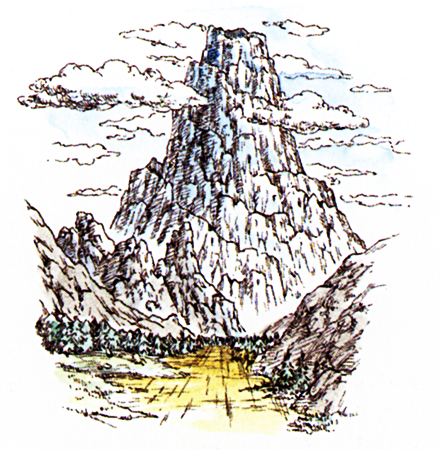
Name origins [story background]: Most of the character names or terms used in the game are inspired by the names of physicists, astronomers, alchemists, or celestial objects. For example, Herschel is taken from the British astronomer (William Herschel), Oersted from the physicist whose work laid the foundations of electromagnetism (Hans Christian Ørsted), and Olbers from the name of a German astronomer (Heinrich Wilhelm Matthias Olbers). Seyfert is based on the real-life Seyfert galaxies, and Nereid on one of the moons of Neptune. Additionally, Zosimos and Libavius are the names of alchemists. The developer Mr. Toyoda's passion for learning can serve as an explanation for his naming methods, but let us put that aside for now. If you were to ask him, his response would be that he attempted to do something similar with Destiny, but when no one noticed that he had actually based the name Berselius on the chemist Berzelius who invented chemical formula notation, he had to shake his fist at the Japanese school system in chagrin. Will he find more success this time around? (Famitsu, p23)
Nereid [story background]: The god of the nonmaterial world Baten Kaitos. Long ago, Seyfert defeated Nereid in battle and sealed him into Regulus Knoll. When the seal was broken, Nereid took control of Shizel, who possessed latent Dark Aurora ability, and plotted his revenge against Seyfert. This time Nereid chose the Grand Fall as his method of vengeance. His aim was not only to destroy Eternia and return it to the nonmaterial world, but also to capture all of the craymels within his body, and to perfect his harnessing of the Dark Aurora. (Famitsu, p26)
Olbers Boundary (or Orbus Barrier) [toponym]: The plane of demarcation between Inferia and Celestia, and the point at which the gravity of both worlds is held in equilibrium. Originally located at 10,000 meters into the sky, it has been moving closer in relation to the ground with each successive Olbers burst. Due to certain effects exerted upon it by the Seyfert Ring, its surface is constantly shifting and undulating like an oil slick. (Famitsu, p20)
Olbers Bursts (or Orbus Wave) [phenomenon]: An explosive phenomenon generated by the Dark Orb as it floats in the Olbers Boundary. The bursts cause shock waves to ripple outward from the Orb in concentric circles, spreading across the surface of the Boundary like a tsunami. This in turn triggers diastrophic movement that shifts Inferia and Celestia closer towards each other, substantially narrowing the distance between the two worlds with every burst. This event occurs four times over the course of the game. (Famitsu, p20)
Paintings [arts]: Paintings depicting such fondly-remembered themes as "Flying Dragon Soaring Through the Sky" (in a guest room at an inn in Mintz), "Great Tree Soaring Through the Sky" (in the Royal Observatory), etc., are displayed discreetly across various locations. (Famitsu, p20)
Peepit [creature]: A type of small bird with adorable big round eyes. This time they are only mentioned by name and do not appear as one of the monsters. They seem to be quite popular in Inferia, as their eggs make frequent appearances in the form of tasty omelettes, and as material for a spooky story, and also as an item dropped by Hyades. (Famitsu, p27. In Japanese, peepit is "piyopiyo," which is onomatopoeia for a baby chick's peeping cry.)
Quickie [creature]: A rare species of animal that inhabits Celestia. Their bodies are small at around 15cm long, but their ears are 12cm long and tail 45cm long, reaching a total combined length of 72cm. However, they weigh very little at 200g, and their distinctive fluffy blue fur, perhaps one of their most famous traits, is feather-light. They not only excel in jumping power, but can also stand up on their tails as if they were legs. Moreover, they possess a special ability to sense threats and turbulent auras, and emit a cry of "kukee-kukee!" to signal when danger is nearby. The name "Quickie" was coined by Meredy, but their scientific name is "pottorabiccinus." Allegedly delicious when eaten. (Famitsu, p21)
Royalty [culture]: The class at the top of the social hierarchy, with the King at its apex, that possesses absolute authority over Inferia. They believe unquestionably that the masses exist to serve them. (Famitsu, p20)
Rubber ducky [item]: An important item needed to open the door in the basement of Chat's hut. That being said, it is just an ordinary toy duck, and it still needs to be combined with an ordinary wind-up mechanism to be usable. The choice of items here seems to show the influence from having Aifread as an ancestor. (Famitsu, p18)
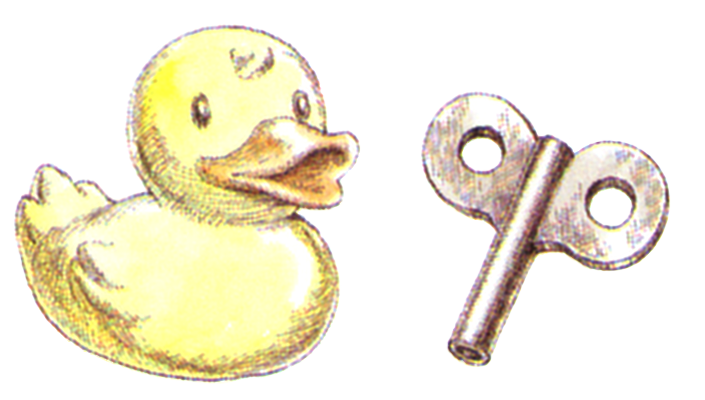
Senate [culture]: An organization composed of a class of aristocrats who are elite even among the ranks of the nobility. They are the center of the nation's political structure, and its main decision-making apparatus. (Famitsu, p21)
Seyfert [story background]: The God who created the material world. He has an antagonistic relationship with Nereid, the god of the nonmaterial world. Seyfert is seen as a benevolent deity by those who dwell in Inferia, in contrast to Nereid who is considered to be evil. Seyfert actively intervenes in human history in various ways, whether through His own powers or through His servant, Seyfert's Messenger. He also used His power to envelop Inferia and Celestia into an enclosed space by means of the Seyfert Ring. Seyfert's name evokes dread in the people of Celestia, who had been taught an inaccurate view of history by Nereid. (Famitsu, p23. In real life, Carl Keenan Seyfert was a 20th century American astronomer who was the first to describe an important class of galaxies that would eventually be named after him ("Seyfert galaxies").)
Seyfertism [culture]: The religion that worships Seyfert. Its teachings, which focus on preaching generosity and benevolence, are written down in the Holy Book of the True Ring. As the state religion of the Kingdom of Inferia, its churches have been built on every continent, and it carries substantial political influence due to its many adherents. The Church venerates the Seyfert Ring as a symbol of faith, which it also uses as a religious emblem. The recent appearance of the Dark Orb is interpreted by the Church as an auspicious omen predicting Seyfert's Second Coming, although there is no scientific basis for such a claim. (Famitsu, p24)
Seyfert Key [item]: 12cm in length, 5cm in diameter at its widest spherical portion. If someone grasps the Key and prays intently, it will emit a ray of light to indicate the proper path, or direction, that the person should follow. As a national treasure of the Kingdom of Inferia, the Key had been stored in the treasury since the state's founding, but recently it suddenly began to radiate light in a particular direction. It may also be used as a key in the literal sense to open doors in the ruins left behind by Seyfert. (Famitsu, p24)
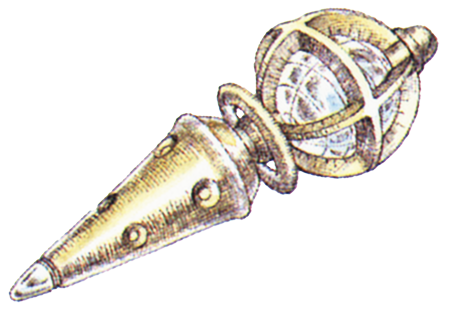
Seyfert Observation Post (or Seyfert Observatory) [structure]: A structure floating in the Olbers Boundary whose purpose is the operation and observation of the Seyfert Ring. Since it is cleverly camouflaged by the manipulation of light refraction, it cannot be detected from either Inferia or Celestia. (Famitsu, p24)
Seyfert Ring [structure]: A ring-shaped structure created by Seyfert, measuring 33.333[...] calangues (approximately 10km) in diameter. When seen from Inferia, it rotates clockwise at a rate of one revolution per day as it floats in the Olbers Boundary. The Ring performs the dual functions of connecting Inferia and Celestia to each other and sealing them off in space. If the core at its center were to be breached, the Ring itself would be destroyed, and both worlds would return to a normal state. The Ring influences the Olbers Boundary and both worlds in a variety of ways, but because it was constructed with technology beyond human understanding, the exact nature of the effects it exerts upon them remains unknown. (Famitsu, p24)
Seyfert Shrine [structure]: A shrine built long ago by Seyfert or his disciples. It now lies in ruins, its very existence forgotten. Those who undergo the Trials of Seyfert are required to visit this site. (Famitsu, p24)
Snow of Happiness [phenomenon]: A natural phenomenon that can only be observed on Celestia, in which light from the rising sun appears to radiate through the air. It is called "snow of happiness" because the light resembles snow. According to legend, two lovers who watch this sight together will live happily ever after. Keele believes that it might be caused by the diffused reflection of sunlight on suspended particulates floating in the atmosphere, or possibly by the interaction of craymels in response to changes in temperature. (Famitsu, p21)
Sodi (or Satay) [culture]: The general term for the seasonings used in Celestian cooking. The flavors of sodi pack a powerful punch and can be held responsible for the eccentric character of Celestian cuisine. As Celestians may adjust the amount of sodi they add to their cooking according to their inclinations, the same dish can take on many unique and wildly idiosyncratic flavors. Red sodi, which originates from a pepper-like red fruit ground into a fine powder, is extremely spicy. White sodi is a syrupy, milky fluid made from processed tree sap; the flavor is intensely sweet. Black sodi comes from a small black fruit that is crushed before adding to food, and has an incredibly bitter taste. Finally, there is purple sodi, which is extremely spicy, intensely sweet, and incredibly bitter at the same time. The origins of this mysterious spice are entirely unknown, other than the fact that the main ingredient appears to be some sort of plant life. (Famitsu, p24)
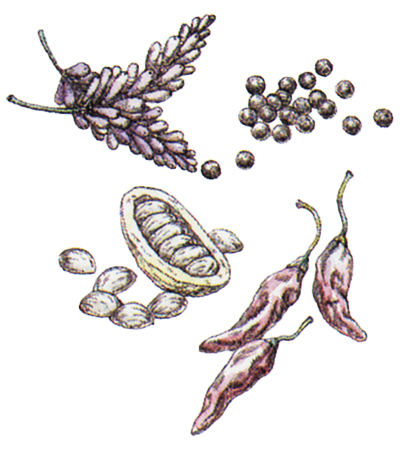
Suom (or sohme) [unit of measurement]: A unit of time, said to represent the number of days that Seyfert spent creating the world. One suom presumably corresponds to one week, but the exact number of days in a week has been deliberately left undetermined. This design choice may have been meant to take into account the fact that the speed and length of time it takes to progress through the game differ depending on the player, and that the number of days that pass within the game itself is subject to variation. (Famitsu, p23)
Underpants [culture]: Something that appears several times in the skits and has its name uttered repeatedly. (Famitsu, p27)
Undersea art [arts]: While exploring the ocean floor, you may discover words and pictures drawn underneath the sea. On Inferia's seabed, you can find a picture of someone resembling Meredy at 159.175, a map of Inferia with an arrow pointing to the current location at 61.90, and the words "Tales of Eternia" etched onto the Celestian seabed at 165.80. Other markings besides these, including Aifread's logo, are also hidden at other sites. (Famitsu, p20)
University of Mintz [structure]: Among the several universities established in Inferia, this institute of higher learning occupies the top rank. Wearing its white school uniform is said to be the aspiration of many young people. The university contains both undergraduate and graduate colleges, and Keele was granted a special exemption to be admitted to the former when he was 13 years old. He is currently enrolled in a doctoral program at a mere 17 years of age. As a point of trivia, his student identification number is 34604. (Famitsu, p28)
Waiiru [culture]: A slang term in the Melnics language, meaning "cool." (Famitsu, p29)